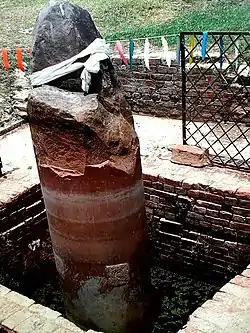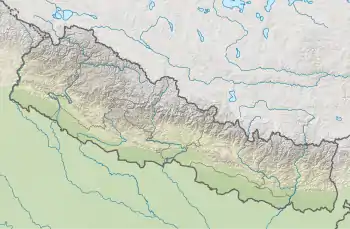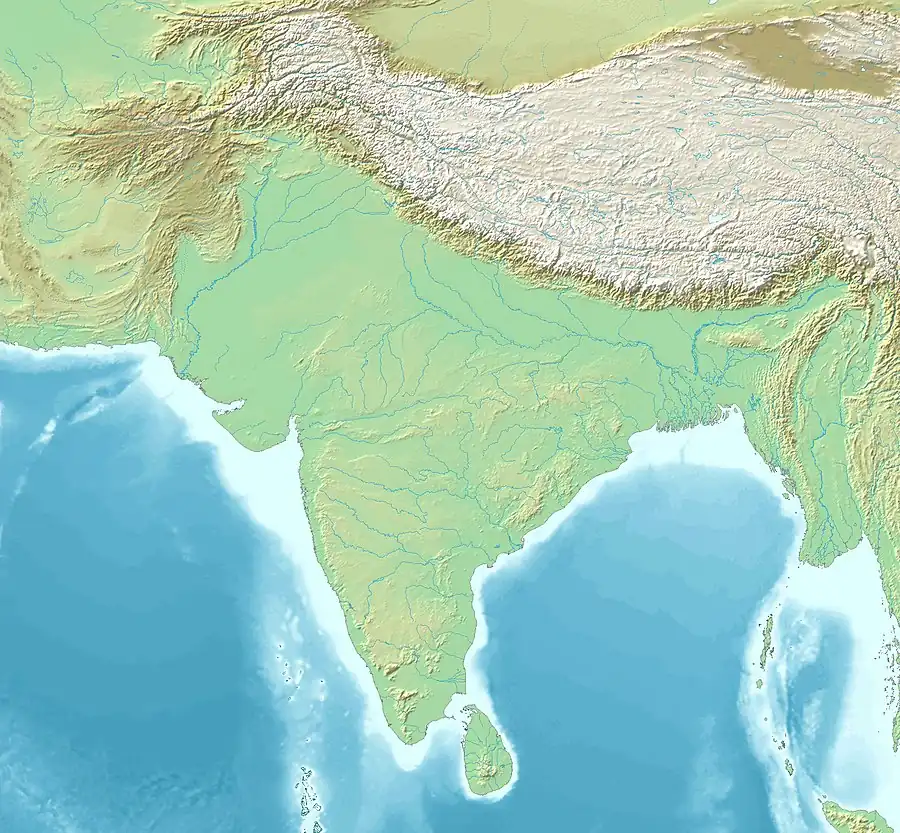Gotihawa
Gotihawa (formerly called Gutivā in Western sources) is a village development committee located about 4 kilometres (2.5 mi) southeast of Kapilavastu, in Kapilvastu District, in the Lumbini Zone of southern Nepal. At the time of the 1991 Nepal census it had a population of 3,335 people living in 567 individual households.[1]
Gotihawa
गोटिहवा | |
|---|---|
 The Gotihawa Pillar of Ashoka. | |
 Gotihawa Location in Nepal  Gotihawa Gotihawa (South Asia) | |
| Coordinates: 27.51°N 83.03°E | |
| Country | |
| Zone | Lumbini Zone |
| District | Kapilvastu District |
| Elevation | 103 m (338 ft) |
| Population (1991) | |
| • Total | 3,335 |
| Time zone | UTC+5:45 (Nepal Time) |
History
Modern-day Gotihawa was known as Khemavati in ancient times. According to Theravāda Buddhist tradition, Kakusandha Buddha was born in Khemavati.[2] Kakusandha Buddha is one of the ancient Buddhas whose biography is chronicled in chapter 22[2] of the Buddhavamsa, one of the books of the Pāli Canon.
The base of a Pillar of Ashoka has been discovered at Gotihawa, and it has been suggested that it is the original base of the Nigali Sagar pillar fragments, found a few miles away, which contain an inscription of Ashoka (3rd century BCE).[3]

References
- "Nepal Census 2001". Nepal's Village Development Committees. Digital Himalaya. Archived from the original on 12 October 2008. Retrieved 14 December 2008.
- Vicittasarabivamsa, U (1992). "Chapter 22: Kakusandha Buddhavamsa". In Ko Lay, U; Tin Lwin, U (eds.). The great chronicle of Buddhas, Volume One, Part Two (1st ed.). Yangon, Myanmar: Ti=Ni Publishing Center. pp. 274–80.
- Irwin, John (1974). "'Aśokan' Pillars: A Reassessment of the Evidence-II: Structure". The Burlington Magazine. 116 (861): 721. ISSN 0007-6287.
Further reading
- Verardi, G. (1998). Excavations at Gotihawa. A Note on the Results Obtained during the First Excavation Campaign in Winter 1994-95, Ancient Nepal, pp. 180–205
